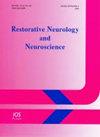病程长短对多发性硬化症患者焦虑和抑郁的影响大于治疗
IF 1.6
4区 医学
Q4 NEUROSCIENCES
引用次数: 0
摘要
多发性硬化症(PwMS)患者经常报告生活质量下降,这与他们的焦虑和抑郁有关,这与ms的生物学未知因素有关。COVID-19大流行增加了焦虑的风险,因为疫苗疗效和免疫抑制疾病修饰疗法存在不确定性。研究人员从宾夕法尼亚州立好时医学中心神经病学门诊招募了PwMS,并要求他们完成人口统计问卷和抑郁调查(MS-Beck抑郁量表,MS-BDI)和医院焦虑和抑郁量表(HADS)。该研究的基本原理是确定治疗方式、年龄和疾病持续时间是否会影响PwMS患者的焦虑和/或抑郁。来自150名参与者的数据被纳入分析。总体平均年龄为54.6岁,男女比例为3.7:1,平均病程约为17年。HADS-D平均评分为4.68±0.3分,高分(> 8分)为10.0±0.32分,男女差异无统计学意义。平均HADS-A评分为6.15±0.36,男女差异有统计学意义。平均HADS-A高分为10.77±0.40,性别差异无统计学意义。MS-BDI平均评分为4.15±0.7,男女差异无统计学意义。焦虑得分与疾病长度的关系分析显示,男性和女性之间没有差异。不同疾病改善疗法对PwMS患者的焦虑评分没有差异。总之,PwMS患病年数对焦虑水平的影响大于年龄或治疗方案。本文章由计算机程序翻译,如有差异,请以英文原文为准。
Length of Disease More than Therapy Impacts Anxiety and Depression in Multiple Sclerosis
Persons with multiple sclerosis (PwMS) often report a reduced quality of life related to their anxiety and depression associated with the biological unknowns of MS. The COVID-19 pandemic increased the risk of anxiety due to the uncertainties related to vaccine efficacy and immune-suppressing disease-modifying therapies. PwMS were recruited from the Neurology Clinic of the Penn State Hershey Medical Center and asked to complete a demographic questionnaire and surveys on depression (MS-Beck Depression Inventory, MS-BDI) and the Hospital Anxiety and Depression Scale (HADS). The rationale for the study is to determine whether treatment modalities, age, and length of disease impacted anxiety and/or depression in PwMS. Data from 150 participants were included in the analyses. The overall mean age was 54.6 years with a 3.7:1 female:male ratio and mean length of disease of approximately 17 years. Mean scores of the HADS-D, and high scores (> 8) were 4.68 ± 0.3 and 10.0 ± 0.32, respectively, with no differences between males and females. The mean HADS-A score was 6.15 ± 0.36 with significant differences recorded between male and females. The mean high HADS-A score was 10.77 ± 0.40, with no differences between sexes. The mean MS-BDI score was 4.15 ± 0.7 with no differences between males and females. Analyses of anxiety scores in relationship to length of disease revealed no differences between males and females. Anxiety scores did not differ for PwMS on different disease-modifying therapies. In conclusion, the number of years that PwMS had the disease impacted anxiety levels more than the age or treatment regimen..
求助全文
通过发布文献求助,成功后即可免费获取论文全文。
去求助
来源期刊
CiteScore
5.40
自引率
3.60%
发文量
22
审稿时长
>12 weeks
期刊介绍:
This interdisciplinary journal publishes papers relating to the plasticity and response of the nervous system to accidental or experimental injuries and their interventions, transplantation, neurodegenerative disorders and experimental strategies to improve regeneration or functional recovery and rehabilitation. Experimental and clinical research papers adopting fresh conceptual approaches are encouraged. The overriding criteria for publication are novelty, significant experimental or clinical relevance and interest to a multidisciplinary audience. Experiments on un-anesthetized animals should conform with the standards for the use of laboratory animals as established by the Institute of Laboratory Animal Resources, US National Academy of Sciences. Experiments in which paralytic agents are used must be justified. Patient identity should be concealed. All manuscripts are sent out for blind peer review to editorial board members or outside reviewers. Restorative Neurology and Neuroscience is a member of Neuroscience Peer Review Consortium.

 求助内容:
求助内容: 应助结果提醒方式:
应助结果提醒方式:


